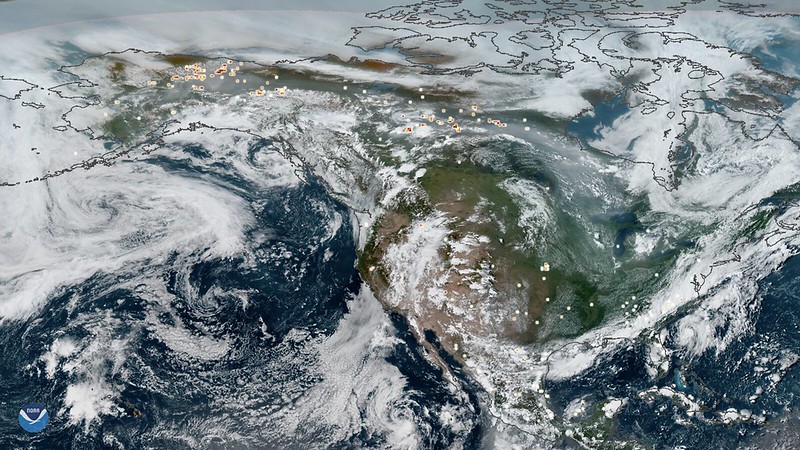Have Canada and the United States failed to design effective, impermeable 21st-century airspace security mechanisms?
The recent influx of unidentified flying objects (UFOs) circling North America since January 28, 2023, has left citizens of both Canada and the United States feeling vulnerable, abandoned, and looking towards political representatives for answers. If military officials and analysts have uncovered specific details regarding the objects’ origins, intended missions, and what information may have been gained by these aircrafts, they have been cautious, and unforthcoming to divulge findings to the greater public. One reason for this may be that they are aiming to dissuade greater speculation amid what is surfacing to be an actual threat to the North American Aerospace Defense Command (NORAD)’s “outdated” technology. Why has North American defence security and intelligence slipped through the cracks when planning for defence policy?
To date, there have been four UFOs identified by North American-led services. The general response given to public queries has been that there can be “very good guesses” made about why foreign entities may have sought to interfere in shared international airspaces, as revealed by Jedidiah Royal, U.S. Assistant Defense Secretary for the Indo-Pacific. More than a month has passed since the first Chinese-operated balloon was shot down in North Carolina and there has been very little confirmation as to what these ‘guesses’ may be. A further investigation into geopolitical fallouts can provide insight into how these seemingly isolated incidents may serve to be precautionary tales for necessary changes to ensure that technological developments are reflexible, adaptable, and capable of intercepting foreign activity to minimize security risks. China has since denied the Pentagon’s allegations that the balloon was operating on an intelligence-based mission.
Despite attempts at easing domestic tensions, these recent UFO sightings have increased internet searches for “Do aliens exist?”, “What is a UFO?”, “Should I be worried about UFOs?”, and welcomed a hearty debate into NORAD’s credibility gap to deliver accessible, timely information on contemporary security. Given that UFOs have been circling for an admittedly five years’ time under surveillance of NORAD, what is there to be said for the security responsiveness of Canada and the U.S. in the event that a perceived threat becomes an immediate cross-territorial emergency?
NORAD’s Deputy Commander and Lieutenant General, Alain Pelletier, admits that should there be a foreign threat from continued global powers of Russia or China, existing radar technology would have great difficulty in determining the origin or specifications of incoming aerial incursions. The shared areas that he is referring to extend past shared Canada-U.S. territory, continuing into lesser protected regions of the North American Arctic and areas bordering Greenland, Denmark, Norway, Sweden, Finland, Russia, the Faroe Islands, and Iceland. Pelletier’s statement is contradictory to previous information published by NORAD, who first listed modernization of defense operations and systems as a priority in 2015. Developments were to include the North Warning System, which is said to “detect low-flying cruise missiles and small drones.” Subsequently, Pelletier’s comments point to the points to the credibility gap described by Canada’s Auditor General Karen Hugh in terms of NORAD’s detection and capacity to respond to external aerospace presences; leaders were left scrambling to form statements and further, take decisive action prior to ordering F-22 U.S. Air Force jet series to shoot the four high-altitude objects down in February. Perhaps it was because of the lack of an immediate threat and friendlier foreign relations that leaders did not think to make developments in times of peace. However, this has led to scrutiny and a callout for proactive and preventative surveillance for domestic territory for Canada and the U.S.
Domestically, leaders have not been able to form a political consensus on what is shared (or is censored) in the media, and much less so amongst their fellow actors. In Canada, Prime Minister Justin Trudeau shared with Canadians, on February 12th, 2023, that he was working with United States’ President Joe Biden’s administration to assess immediate action. They were “taking the situation extremely seriously” alongside an unprecedented increase in tensions amongst foreign relations among world powers. This followed a critique by Official Opposition Leader, Pierre Poilievre, accusing the Trudeau’s Liberal Administration of leaving Canadians vulnerable to the threat of foreign interference and counterintelligence since their run of leadership in 2015. Foreign Affairs Minister, Melanie Joly, backed up the Liberals stating that her department has been in collaboration with the U.S. Department of National Defense and Secretary of State, Antony Blinken, to jointly “continue to take all necessary measures to safeguard Canada’s sensitive information.” Biden’s Democrats have received similar resistance in Congress, with House Intelligence Committee Ranking Member, Jim Himes, suggesting the lack of transparency and communication to the House of Representatives is a “real concern,” for the future accountability and commitment to national security. This disunification of attitudes and domestic dissatisfaction poses a greater political risk, as there will need to be a precise, effective strategy that emerges domestically before it is presented to China.
As far as diplomatic relations are concerned with Xi Jingping’s People’s Republic of China, the path forward must be eased with honesty and willingness to cooperate among all parties. Chinese Foreign Minister, Wang Wenbin, unwaveringly defends his government’s actions, suggesting that “irresponsible and trigger-happy overreactions” taken by North American Air Forces to shoot down supposedly innocent unmanned airships should be the central focus of international analysts moving forward, rather than investigating China’s missions. To counter Wenbin’s position, Biden and Trudeau have jointly refused to apologize for a zero-tolerance response to recent foreign interference. To debate what may have been indeed a miscalculation of airspaces by China’s Air Forces, there remains much room for speculation and assumptions to be drawn from Canada and the United States’ top analysts and policymakers.
The decision of NORAD to conduct an exercise mobilizing Operation NOBLE EAGLE (the official name given to the mission protecting the sovereignty of North American airways) aircrafts on February 15th. This comes at a coincidental time considering the official statement reports the practice was “in no way related” to events that have occurred within the past two weeks. Unlike China’s vague – or lack of – responses to claiming ownership of these aircrafts, the North American security strategy moving forward necessitates a rapid development of technology in order to forecast future, and increasingly imminent presences over cross-geographical territory. Further, the actions taken must be transparent, and be precise in order to communicate intention. Within the next few weeks, it should be expected that North American leaders will gain international insights, hold strategic sessions of discussion, and consult military and defence commanders. Doing this will allow both countries to remain vigilant, secure, and regain control over foreign interruption.
Edited by Katherine Lake

Olivia Bornyi joined the Catalyst team in January 2023, bringing with her a fresh and critical analysis of political relations and development studies. She is entering her fourth year of Political Science and International Development Studies at McGill University, and just completed a semester abroad at Sciences Po in Paris, France! Olivia’s research interests include security studies, social discourses on political relations, humanitarian diplomacy, and comparative studies of development. Outside of academics, Olivia enjoys planning future travels, knitting, and discovering new cafés in Montréal.

